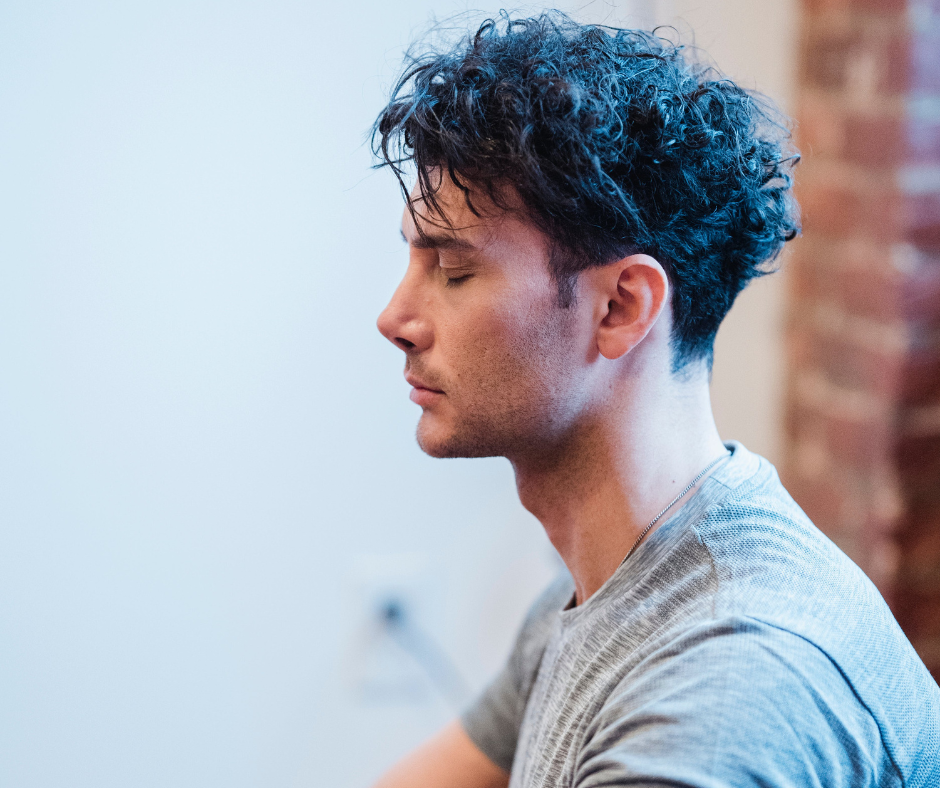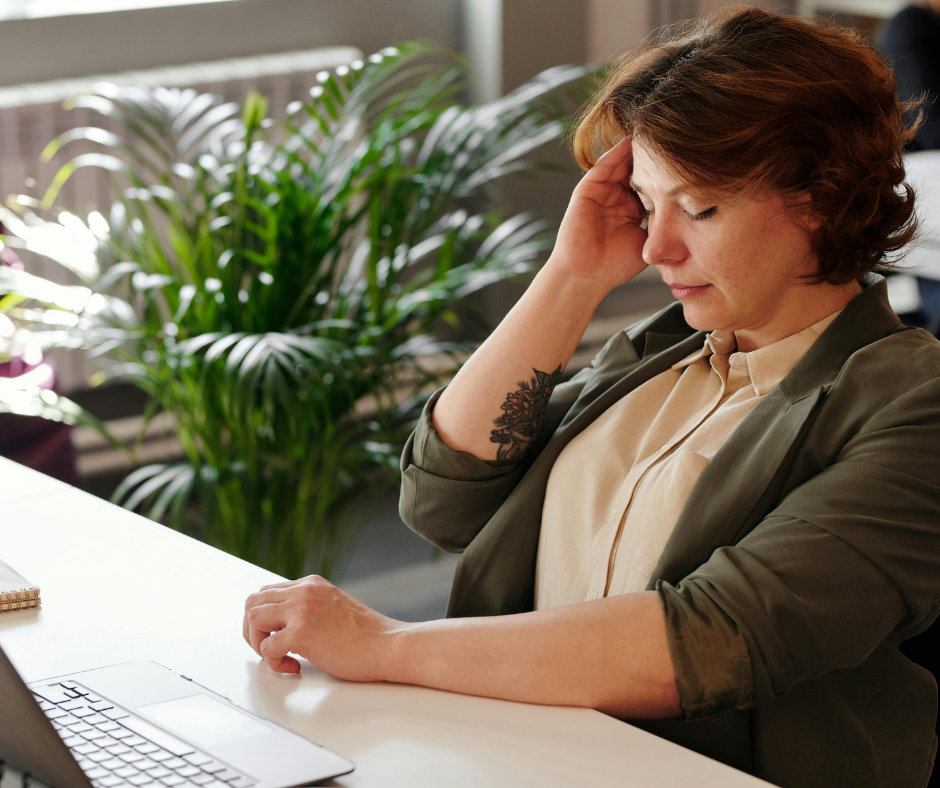If you have experienced anxiety, it sucks! Unfortunately, it is a problem that millions of people face worldwide for many different reasons. It is a mental health condition that is very common, though it has not started to be properly addressed until recently. With the increased pressure to survive in the modern world, anxiety symptoms have become more prevalent in the workplace. That is why a growing number of organisations are taking measures to increase awareness and support for this condition.
It is a shame, but there are many that are suffering from anxiety and don’t even realise it or don’t know how to deal with it. This can be because they have never experienced it before and don’t know what signs to look out for or they are lost in how to control it. Therefore, it is important to know what anxiety is and what signs there are to look out for. You should also know how to recognise whether it is happening to you or someone you know. Then take measures to ease the anxiety affecting yourself or others around you.

What is anxiety?
Anxiety is a mental health condition that is characterized by feelings of unease, worry and fear. It is a natural response to stress or perceived threats, but when it becomes excessive or persistent, it can significantly impact your daily life. Individuals with anxiety may experience physical symptoms such as rapid heartbeat, sweating, trembling and difficulty concentrating. It is important to note that anxiety disorders are different from occasional feelings of nervousness or stress, as they tend to be chronic and interfere with one’s ability to function normally.
Anxiety has become increasingly prevalent due to various factors in society. The fast-paced nature of modern life, constant exposure to social media and high expectations in your work and personal life contribute to heightened levels of anxiety. The pressure to succeed, maintain relationships and meet societal standards can create a constant state of worry and apprehension. Furthermore, current uncertainties surrounding people’s health, job security and the future increases the issue. With feelings of fear and stress affecting many at the moment, anxiety has naturally become commonplace.
Anxiety itself not only affects your mental well-being but also has physical manifestations. When someone experiences anxiety, their body goes into a “fight-or-flight” response. This causes them to release stress hormones such as cortisol and adrenaline. The physiological reaction caused by this can lead to increased heart rate, rapid breathing, muscle tension and digestive issues. Prolonged periods of anxiety can also weaken the immune system and disrupt sleep patterns. From there it can contribute to the development of other health conditions. Therefore, it is crucial to address anxiety promptly and seek appropriate support to minimize its impact on both your mental and physical health.
What are common anxiety symptoms?
When you feel threatened or fearful, your body tends to react whether there is a life threatening situation or not. In some cases, you may experience an event that leaves you stressed and intimidated, such as two people arguing. Other times, it is self-induced stress where your mind creates a worst case scenario, such as not making the deadline.
In either case, there are various anxiety symptoms that manifest as a way for your body to cope with the situation it believes is life threatening. These symptoms can be both physical and psychological with short term and long term effects on your health. Therefore, it is important to understand what symptoms can cause anxiety and panic attacks so you can better help yourself and others.
Some anxiety symptoms that can manifest when you feel stressed or overwhelmed include:
Rapid heartbeat (palpitations)
During panic attacks, your body’s fight-or-flight response is activated, which releases adrenaline into your bloodstream. This leads to an increase in heart rate, sometimes to the point that it puts severe strain on the body. When this happens, it can cause heart palpitations, where you may feel your heart pounding or even skipping a beat as it labours to increase your blood flow.
Shortness of breath
Anxiety can lead to hyperventilation, where you breathe rapidly and shallowly. This can result in a feeling of not getting enough air, leading to shortness of breath. It is a known physiological response which is triggered by the body’s attempt to take in more oxygen during a perceived threat.
Chest pain or discomfort
Anxiety can cause chest pain or discomfort, often described as a tightness or pressure in the chest. This symptom can be alarming and may mimic the sensations of a heart attack. It occurs due to the tightening of muscles in the chest and increased tension from a panic attack.
Sweating
Anxiety triggers the release of stress hormones, which can activate the body’s sweat glands. Sweating is a common response to anxiety and can occur even in the absence of physical exertion or high temperatures. It is the body’s way of regulating temperature during the fight-or-flight response.
Trembling or shaking
Anxiety can cause involuntary trembling or shaking of the hands and legs as well as other body parts. This anxiety symptom is a result of the body’s natural reaction to stress. It increases your adrenaline and causes muscle tension in your limbs and torso so your body is ready to move.
Dizziness or light headedness
Feeling dizzy or lightheaded is a common symptom of anxiety. It is generally caused by hyperventilation, which alters the balance of oxygen and carbon dioxide in the body as you inhale and exhale rapidly. Increased muscle tension may be experienced around the neck and head, which can also contribute to feelings of dizziness.
Nausea or stomach discomfort
Anxiety can affect the digestive system, leading to symptoms like nausea, stomach pain or a “butterflies in the stomach” sensation. The body’s stress response can disrupt normal digestion and cause increased sensitivity in the gastrointestinal tract.
These anxiety symptoms appear when the brain perceives danger and triggers the release of stress hormones, such as adrenaline. Naturally the physiological changes in the body are meant to help you respond to threats. However, in the case of anxiety disorders, these responses can be triggered excessively which leads to a build-up of stress that is then released all at once during a panic attack.

What are effective self-help strategies for managing anxiety symptoms?
It is hard to manage anxiety on your own but it is not impossible. There are a range of proven techniques and tools that can empower you so you can navigate your anxiety more effectively. By implementing these strategies, you will develop a greater sense of calm, resilience and overall well-being. This will allow you to manage stress and anxiety in various aspects of your life including at work and home.
Five effective strategies for managing your anxiety symptoms include:
1. Deep Breathing Techniques
Deep breathing exercises can help calm the body and mind at the same time, which is great for reducing anxiety symptoms. To practice deep breathing, find a comfortable position and take a slow, deep breath in through your nose. Allow your abdomen to expand and hold your breath for a few seconds. Then, when you are ready, exhale slowly through your mouth. Repeat this process several times, focusing on your breath and allowing tension to be released from your body with each exhale. If you are experiencing a panic attack, this exercise is particularly helpful and will allow you to calm yourself back down and prevent hyperventilation.
2. Regular Exercise For Anxiety Symptoms
Engaging in regular physical activity can reduce anxiety symptoms for multiple reasons. Exercise releases endorphins, which are natural mood boosters, while helping to reduce stress and tension in the body. Aim for at least 30 minutes of moderate-intensity exercise each day to get your heart rate up and your blood circulating. Unfortunately, a stroll won’t cut it. You need to do some brisk walking, jogging or cycling for your body to start releasing the built up tension.
3. Cognitive Behavioural Therapy (CBT)
CBT is a widely recognized and effective therapy for managing anxiety symptoms. It focuses on identifying and challenging negative thought patterns and beliefs that contribute to anxiety. By replacing negative thoughts with more realistic and positive ones, you can learn to better cope with your anxiety and stressors. CBT techniques include cognitive restructuring, thought stopping and exposure therapy, to name a few.
4. Stress Management Techniques For Anxiety Symptoms
Learning and practicing stress management techniques can help you alleviate anxiety symptoms. These techniques include mindfulness meditation, progressive muscle relaxation and guided imagery. Mindfulness meditation involves focusing on the present moment without judgment to reduce the effects of being overwhelmed by your thoughts and emotions. Progressive muscle relaxation, in turn, helps the body by tensing and then releasing different muscle groups to promote relaxation. Guided imagery uses positive visualization techniques to create a calming and peaceful mental image that helps you unwind and relax. By using these techniques together you can change your outlook on your life and improve your happiness while reducing stress.
5. Healthy Lifestyle Habits
Maintaining a healthy lifestyle can have a positive impact on anxiety symptoms. Habits that you can implement at home include getting enough sleep and eating a balanced diet. Cliché, but it works! Limiting caffeine and alcohol intake while avoiding smoking or drug use is also important. Remember, if you don’t take care of your body it won’t be able to take care of you! If you are experiencing negative impacts on your lifestyle and habits, such as sleep deprivation, poor nutrition and substance abuse, it can exacerbate anxiety symptoms and send you spiraling.
Performing any of these strategies will enable you to better handle your anxiety symptoms naturally. However, anxiety is not a condition that just goes away with the tide. It is an ongoing battle in every minute of every day. So, you have to be on your guard and catch yourself when your thoughts turn dark or something tries to upset you. If the pressure is too great to handle and anxiety is affecting your lifestyle then seeking help may be the best course.

When should I seek professional help for anxiety symptoms?
It’s important to note that everyone’s experience with anxiety and panic attacks may vary. Not everyone has it easy and others might not know of the hardships you face each day. Therefore, it is recommended that you consult a healthcare professional when you feel the need to. They can provide you with an accurate diagnosis and appropriate treatment for extreme anxiety symptoms.
You can also seek ongoing support if you need to. This will allow you to build the tools you need to live with anxiety and maintain a healthy mental state. You may find that positive affirmations work for you or changing your mindset about situations. Your health care professional can point you in the right direction and help you find what is best for you.
Increase Your Awareness Of Anxiety Symptoms
Increasing your awareness of anxiety symptoms is the key to managing them. With the more knowledge you gain about what anxiety is and how to handle it, you gain more power over it. This will enable you to help your mental wellbeing and others so you can have a better quality of life. So, stay positive and keep fighting because helping yourself is the most important thing you can do!
Please be advised this information may help but is NOT a replacement for professional health advice. If you are feeling unwell please speak to a medical professional.



